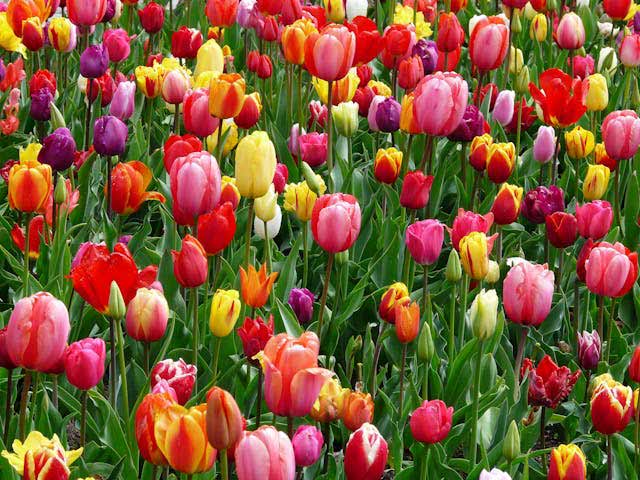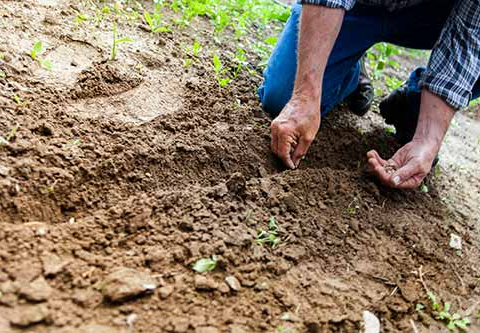As a home gardener, one of the satisfying rituals of spring is finding new garden treasures; those plants that are making their debut in the retail marketplaces. They are generally sports or hybrids of plants that have been on the market for years, with the new ones having a different sense of style and usage to them. Or, they can be new hybrids. Whether larger or smaller in size; darker, lighter or variegated leaves or larger flowers; etc., all have the ability to add something ‘extra’ to the humble part of your landscape that cries out to be noticed. A little dramatic? Perhaps. But, you get the gist of what I’m saying. No part of a landscape needs to be boring. It is worth too much in the way of underutilized garden space, monetary value and in satisfying your aesthetic senses to be just ‘Okay.’ A new vignette may be just the thing to enliven the space and create a smile on your face on your face when gazing at the site.
This year, growers and hybridizers seem to have outdone themselves and have brought a bumper crop of hundreds of new (and, of course, improved) plants to garden center shelves and tables. Although I have not actually viewed all of the new candidates, what I have seen at the Northwest Flower & Garden Show, area plant trials and wholesale growers’ beds, have provided me with several contenders for your attention. My prime considerations for Western Washington new plants-of-note include drought and heat tolerance (after root systems are established), disease resistance, low maintenance and, of course, presence in the garden. This year, my candidates for your horticultural scrutiny include perennials, grasses, shrubs and trees (sorry folks, I don’t do annuals). Seek them out, do your own research and evaluate their worthiness for that needy spot in your own yard…….
Artemisia x ‘Silver Lining” (White Sagebrush/Wormwood)
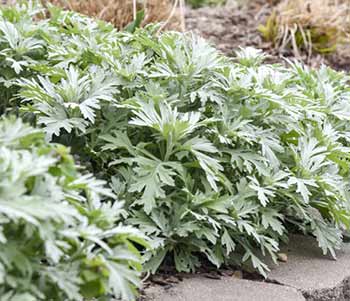
My top perennial choice doesn’t have much in the way of flowers, but, the foliage is a solid winner. A hybrid of two North American natives (the clumping Alaskan artemisia and the Western US artemisia) uses the best of its parentage to create a spectacular, durable foliage perennial. The broadly dissected silver leaves are showy from spring to fall. The mounded, low-wide habit maintains excellent form all season and resists opening up, like ‘Silver Mound’. Use this new perennial as a filler, color transition divider or backdrop in a landscape of flashy colors and or as spiller in mixed containers. Its yellow flowers are held on tall scapes and I would cut them off. In addition to its durability and excellent summer heat and drought tolerance, this artemisia will not rambunctiously spread through the garden as does its cousin, ‘Valerie Finnis.’ ‘Silver Lining’ forms a non-stoloniferous 15″ tall x 36” wide, winter deciduous ground cover with cutleaf silver foliage. Best results will be in average to dry soils, either sandy or clay. If those resilience attributes weren’t enough, this plant is also both deer and rabbit resistant.
Perennial runners-up include Agapanthus africanus ‘Bridal Veil’ (Lily-of-the-Nile), Brunnera macrophylla ‘Frostbite’ (Siberian Bugloss), Heliopsis helianthoides ‘Bit of Honey’ (Ox-eye Sunflower), Heuchera x ‘Forever Midnight’ (Coral Bells), and Teucrium fruticans ‘Harlequin’s Silver’ (Creeping Germander).
Panicum virgatum ‘Niagara Falls’ (Switch Grass)
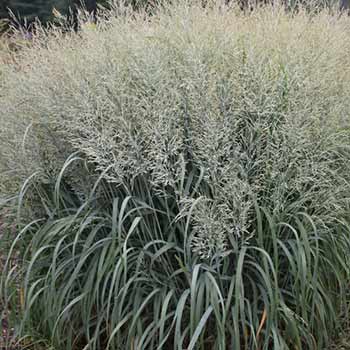
This native from the Great Plains is an excellent grass in just about any landscape. With its late season seedheads and arching habit, ‘Niagara Falls’ is a good replacement for Miscanthus senesis. The powder blue leaf blades arch gracefully in the landscape, creating a soft cascading look. In early autumn, seed head plumes rise above the foliage creating a cream-colored cloud that gives the area texture and interest which will last through winter. Because of its foliage interest, this four-foot-tall grass is a multi-purpose plant that can be used in borders, containers, as specimen or in mass plantings. It is versatile and great looking, just what a plant should be!
It is an easy ornamental grass to grow in full sun to part shade and it will do well in just about any soil type in our part of the State. Remember to water it and cut it back in spring before the new growth appears and you have covered all of your maintenance bases. That’s right, save yourself some work and leave the buff-colored stalks to over-winter. In early fall, the seed head plumes that rise above the foliage will create a cream-colored cloud above the plant and will provide visual interest and bird habitat that will last through the winter doldrums.
Grass runners-up in this category include Amsonia hubrichtii ‘String Theory’ (Bluestar), Pennisetum alopecuroides ‘Lemon Squeeze’ (Fountain Grass) and Schizachyrium scoparium ‘Brush Strokes’ (Little Bluestem).
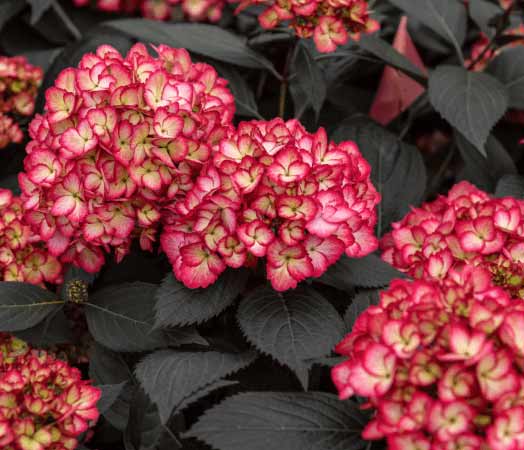
Hydrangea macrophylla ‘Eclipse’ (Big Leaf Hydrangea) is a shrub that has been receiving rave reviews from garden centers this spring. Probably because the shrub retains its dark foliage, rather than fading back to green, during the summer heat. The combination of the intense dark foliage and stand-out cranberry-red and white blooms makes for an excellent color counterpoint in just about any yard and, hopefully, a great dried-flower arrangement in a vase.
‘Eclipse’ is purported to have great disease resistance and low maintenance requirements. At three to five feet tall and wide, ‘Eclipse’ is size-appropriate for just about all smaller urban gardens. For its first three to five years, this hydrangea is a prime candidate for a porch or balcony container. After that, it will need annual pruning to keep it within bounds. As with most hydrangeas, this plant does best in morning sun and some afternoon shade. However, it can thrive in more sun in Western Washington if additional moisture is provided. ‘Eclipse’ is cold hardy down to Zone 5a and can take both our summer heat and winter cold snaps. If you are purchasing only one new plant this year, definitely consider the multi-faceted ‘Eclipse’ (and let me know how it does for you).
Shrub runners-up include Abelia x grandiflora ‘Angel’s Blush’ (Glossy Abelia), Calycanthus floridus, ‘Simply Sensational’ (Eastern Sweetshrub), Hydrangea paniculata ‘Little Hottie’ (Panicle Hydrangea), Ilex x meserveae ‘Little One’ (Blue Holly), Vaccinium corymbosum ‘Midnight Cascade’ (Hanging) Blueberry and Vitex agnus-castus ‘Queen Bee’ (Chastetree).
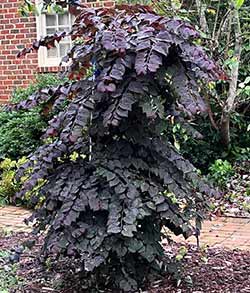
Cercis canadensis ‘Garden Gems Amethyst’ (Redbud) is a new dwarf tree which also features dark leaves and is compact enough to grow in a pot. It’s a slow grower that can reach eight to ten feet tall and wide, which is about half the size of a standard redbud. It flowers in early spring, sparkling with pink blooms before the foliage appears. In summer, the leaves will hold their amethyst color through our heat domes.
‘Amethyst’ is one of those plants I’d call a ‘nativar’ (a cultivar of a native plant, a Redbud in this case) that is pollinator-friendly, making it increasingly popular with the bee-lovers of our area. This new hybrid attracts pollinators and creates the perfect conversation piece in a small landscape or on a condo patio in full sun to part shade. If you don’t happen to care for the look of dark foliage, a sister (cousin?) Redbud will be coming out that has leaves which emerge red and then turn green. It’s called ‘Garden Gems Emerald.’
Tree runners-up include Heptacodium miconioides ‘Temple of Bloom’ (Seven-son Flower), Hesperocyparis arizonica ‘Crystal Frost’ (Arizona Cypress) and Thuja standishii × plicata ‘Leprechaun’(Leprechaun Arborvitae).
Readers should remember that this list is totally subjective. It is based on the plants I have seen and liked for their hardiness, versatility and’ WOW’ appeal that the neighbors don’t have. Use this list to kick-off your own horticultural sleuthing of those new additions at your favorite garden center. The downside of new-plant shopping is to remember the qualities of patience and perseverance. As new introductions, these little treasures may not appear in your area for a while. Do ask the garden center staff if the plant in question can be ordered or your name added to a Waitlist. That tact has worked for me many times over. Best of luck with this annual rite of Springtime and the newfound joy in your little patch of heaven. Happy gardening all!

Contributing columnist, Bruce Bennett, is a WSU Master Gardener, lecturer and garden designer. If you have questions concerning this article, have a gardening question to ask concerning your own landscape or want to suggest a topic for a future column, contact Bruce at gardenguy4u@gmail.com

